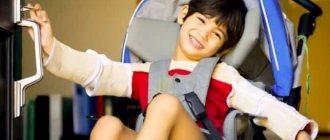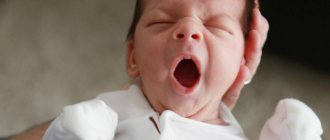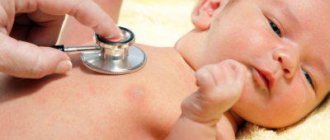What is cerebral palsy and what are its causes?
Cerebral palsy is characterized by disruption of the musculoskeletal system due to pathology of the nervous system, most often the brain. In other words, a child with cerebral palsy has impaired coordination, he cannot make certain movements, it is difficult for him to stand upright, sometimes speech, hearing and vision are affected, and mental and psychological development is also delayed. All this happens because the nerve cells in the brain responsible for performing motor functions are damaged or not developed at all. As a result, some muscles do not contract, while others are in increased tone, which causes clumsy, chaotic movements. The disease does not progress throughout life because local cell damage does not spread to neighboring structures.
The causes of cerebral palsy are divided into two categories: antenatal (intrauterine development during pregnancy) and postnatal (during or after childbirth). However, there are so many factors that influence the disruption of brain cells that it will be easier to consider them by combining them into the following groups:
- hereditary causes. Any mutation or genetic disorder of the mother's or father's chromosomes can lead to cerebral palsy in the child;
- oxygen starvation of the fetal brain. It can occur, for example, with anemia of a pregnant woman or with placental abruption at various stages of pregnancy. The baby may not have enough oxygen if labor is not managed correctly;
- effect of infection. Any of them during pregnancy can leave a negative mark on the development of the fetus. Also, the cause of cerebral palsy in infants can be infectious diseases suffered at a very early age;
- action of toxins. Expectant mothers need to be very careful when taking medications and always consult a doctor about this. Because the substances present in them can have a toxic effect on the child’s brain. The work and life of a pregnant woman should exclude contact with poisons and other chemicals;
- physical factors. These include harmful exposure of the fetus to X-rays or radiation during fetal development;
- mechanical reasons. They are associated with trauma to the child's brain either during fetal development, or during childbirth, or after it.
Recognizing telltale signs of cerebral palsy
Typically, parents and caregivers can detect delays in a child's development by comparing his or her development at certain stages with other children.
If your child seems to be behind in some areas, especially in the motor area, this may be a symptom of cerebral palsy.
Recognizing the signs of cerebral palsy through careful observation of your child can lead to early diagnosis of the disease. The diagnosis of cerebral palsy in most children is recognized at around 18 months of age.
Common hallmarks of cerebral palsy include:
- the child does not kick;
- movements are excessively “rigid”;
- movements are lazy or weak-willed;
- problems moving the eyes;
- preference for movements on one side of the body;
- no smile for three months;
- the child cannot hold his head up for three to six months;
- does not bring hand to mouth at three months of age;
- does not reach out to take an object;
- not sensitive to sound or light;
- signs of communication are delayed;
- unable to walk after 18 months;
- does not have friendly relations with people;
- he does not have his own preferences for objects;
- The child has “uncomfortable” or unusual muscle tone.
Cases of mild cerebral palsy take longer to diagnose because the signs and symptoms do not become quite obvious until the baby is a little older. As a rule, these signs are reliably determined in preschool age.
Ages from birth to three years require careful monitoring. Parents should be vigilant if they notice that other children are ahead of their baby's development.
https://www.youtube.com/watch?v=erowTC68TSA
Early diagnosis of cerebral palsy increases the likelihood of improving the child's long-term quality of life.
In medicine, there are several types of cerebral palsy in children. Their symptoms indicate the degree of damage to the child’s nervous system.
The diplegic form of cerebral palsy appears if the newborn suffered damage to the nervous system in the prenatal period. This pathology manifests itself in a sharp increase in muscle tone, due to which the baby’s legs are constantly extended and crossed.
In the first months of life, the baby experiences a noticeable lack of movement in the lower limbs and no attempts to roll over onto its side or sit down. Often such children also experience a lag in general physical development.
When you try to put the baby on his feet, his muscle tone sharply increases. Such a child walks, not resting on his entire foot, but on tiptoes, while his knees rub against each other, and he places his legs one in front of the other. Such children often lag behind in intellectual development.
The main focus of the activities is physical rehabilitation and adjustment of motor activity. It is important to teach your baby to move correctly and adapt him to life. This is the main task of parents, because without their support it will be difficult for a child to grow and develop into a full-fledged personality.
To improve motor functions use:
- physiotherapy;
- exercise therapy;
- occupational therapy;
- speech therapy assistance;
- hearing and vision correction;
- braces and other orthopedic devices to correct movements.
The emphasis during treatment is on physical therapy exercises.
Types of exercise therapy:
- morning hygiene exercises;
- physiotherapy;
- breathing and sound gymnastics;
- independent physical education;
- walking and walking (including on special corrective exercise machines);
- health path;
- games;
- health running;
- hydrokinesitherapy and swimming.
Principles and methods of exercise therapy:
- regularity;
- systematic nature;
- individual approach;
- taking into account the stage and form of the disease, age, psychological and physical capabilities of the child;
- dosed increase or decrease in loads depending on the condition and well-being of the baby.
You need to think about the child’s rehabilitation immediately after diagnosis. This must be done for socialization and adaptation of the individual.
How to determine the symptoms of cerebral palsy in newborns?
The following external signs require special attention in the early period of development:
- the child has no lumbar curvature of the spine;
- there are no characteristic folds on the butt;
- the folds on the butt and hips are asymmetrical;
If you notice one of the above symptoms, you should immediately consult a doctor for advice. He will monitor the baby, monitor development and muscle tone. If there are obvious signs of cerebral palsy, additional consultation with a neuropsychiatrist will be required.
We determine cerebral palsy symptoms in infants (up to 6 months) by behavior
As a rule, this disease hardly manifests itself in newborns, and it is difficult to diagnose. In addition, the baby’s natural reflexes and low activity at an early age can be confusing. However, in any case, you need to be attentive to your baby. The following signs may indicate the presence of this disease:
- the newborn sucks poorly, has difficulty swallowing, and often chokes;
- at the age of 1 month he does not show a reaction to loud sounds, but should blink his eyes;
- at the age of 4 months he does not turn his head towards the source of noise;
- seeing a toy, the child does not try to reach it;
- periodically he experiences cyclical repetitive movements of the limbs or head;
- the baby freezes in one position;
- when spreading your legs to the sides or turning your head, muscle resistance is felt;
- the baby takes clearly uncomfortable and unnatural positions;
- the baby does not like to lie on his tummy;
- the child sharply pulls his legs towards him or sharply stretches them when he is taken by the tummy.
We determine the symptoms of cerebral palsy in children under one year old
At the age of 6 months, symptoms are much easier to identify, because the child becomes more active, and the lag in one area or another is more clearly manifested. Signs of the disease may include the following:
- The child has natural reflexes, which should not be present by the age of six months. For example, if you press your finger on a child’s palm, he opens his mouth, and when picked up by the armpits, he bends his legs and imitates steps;
- The baby often experiences seizures. They may be unexpressed, in the form of slight twitching of certain muscles, but should alert parents;
- the child’s movements are clumsy, sometimes chaotic, jerky;
- strabismus should also attract close attention. It is necessary to identify its causes as early as possible, that is, find out whether it is cerebral palsy or problems with the visual apparatus;
- at the age of 7 months the baby does not sit independently;
- when a child brings any object to his mouth, his head automatically turns away;
- The baby is already a year old, but he doesn’t want to talk or walk.
The first signs that should alert you
Infantile cerebral palsy is a group of non-progressive diseases of a chronic nature, which are manifested by various impairments of motor functions as a result of brain damage.
But this is not a hereditary pathology, but an acquired one. However, the effect of etiological factors can manifest itself during intrauterine development (due to intrauterine infection, obstetric pathology of the mother, fetal hypoxia and other teratogenic factors).
Brain damage can occur during childbirth or in the first weeks after birth (as a result of central nervous system infections or Rhesus conflict).
Cerebral palsy does not progress, that is, brain damage does not worsen over time, and motor defects can be partially corrected. However, in the absence of appropriate methodological exercises and care, children may experience severe complications.
Symptoms of cerebral palsy are not always detected immediately after the birth of a child, as signs may become obvious in infancy. It is important to notice them in the early stages and consult a specialist to make or refute the diagnosis.
Basically, signs of cerebral palsy in newborns at an early age are practically invisible, but with the gradual development of the nervous system, the symptoms begin to increase.
Parents should be alert if the following primary symptoms appear:
- if the child does not fix his head well;
- manifestation of weakness in certain muscle groups;
- the child does not crawl, does not grasp objects in his hands, does not move;
- no rollovers from stomach to back;
- there are unconditioned reflexes, which normally disappear after 3-6 months of life;
- manifestation of pathological spasticity or increased tone;
- presence of seizures;
- the presence of pathological movements (clumsy, uncontrolled or sudden), dysfunction of the pelvic area;
- possible mental retardation;
- difficulties with vision, hearing and speech.
In infants, symptoms may manifest themselves in the form of freezing in one position, involuntary movements (nodding the head or lack of contact).
You should know that the level of severity of symptoms is related to the depth of brain damage; it can manifest as mild clumsiness when moving, as well as mental retardation and severe paresis.
In most cases, specialists are not able to establish an accurate diagnosis for a child under one year old, even in the presence of pronounced symptoms of pathology (depressed reflexes, increased excitability, etc.).
The child’s brain has high compensatory abilities that can eliminate the bulk of the consequences of brain damage.
A specialist can confirm the diagnosis if the child does not sit at the age of more than 1 year, does not walk or talk independently, or has mental disorders.
You should know that the level of severity of symptoms is related to the depth of brain damage; it can manifest itself as mild clumsiness when moving, as well as mental retardation and severe paresis.
Forms of cerebral palsy
- hemiplegic form (only one side of the brain is affected, so movements are impaired on the right or left);
- diplegic (severe form with damage to both hemispheres of the brain, which is externally characterized by bent legs turned inward and walking on the toes);
- hyperkinetic form (signs include uncontrolled chaotic movements plus delayed speech and mental development).
If any pathologies occurred during pregnancy, for example, a diagnosis of “fetal hypoxia” was made, the woman had rubella or other infectious diseases, or was often exposed to stress, you need to be especially attentive to your baby. The sooner the symptoms of cerebral palsy in a newborn are identified, the sooner doctors will begin treatment. With timely measures taken, good results can be achieved.
Understanding normal development
Every baby develops at a different rate. Some early developmental delays usually go away as the child gets older, but missing milestones may indicate an underlying neurological disorder.
Lack of progress in physical development is one of the first signs that a child may develop cerebral palsy.
If parents are concerned that their child is not crawling, walking or talking at an age-appropriate period, this is a reason to contact specialists who will help monitor the child’s development and formulate the correct diagnosis.
Child development is divided into 4 main stages:
- physical growth;
- cognitive (mental) development;
- training in social interaction skills;
- emotional growth.
Some children experience delays related to physical growth, while other children take longer to learn social or emotional interactions.
Each child's development is unique in its own way. However, knowing what is considered normal can help you recognize problems more quickly and take appropriate action.
Normal child development milestones refer to the overall pattern of physical, emotional, intellectual, and social achievements that most children follow.
These milestones are formulated based on the average progress of the total number of children.
Diagnostics
It is impossible to detect the presence of the disease by observing the baby; one can only assume that not everything is all right with him. The disease must be detected in a specialized clinic. And here it is extremely important to go there as soon as possible in order to make a correct diagnosis and begin immediate treatment.
Diagnosing cerebral palsy allows you not only to identify the problem, but also to understand which specific part of the brain is affected.
Comprehensive diagnostics includes:
- neurological examination (the doctor uses a variety of neurological tests to determine the presence or absence of reflexes),
- ultrasound examination of the brain (ultrasound) (prescribed if there is a suspicion of illness),
- electroencephalogram (performed if convulsive syndrome is present among the symptoms),
- magnetic resonance imaging (MRI) and computed tomography (CT).
It is important that the diagnosis be carried out by an experienced neurologist, since the initial diagnosis of cerebral palsy is not made at all (encephalopathy is a prerequisite for the development of paralysis). But there is a possibility of confusing encephalopathy with banal muscle tone; in such a situation, either the parents will receive incorrect information and the child will not begin to receive proper treatment, or the opposite will happen, when the child is unreasonably prescribed treatment for a disease that he does not have.











